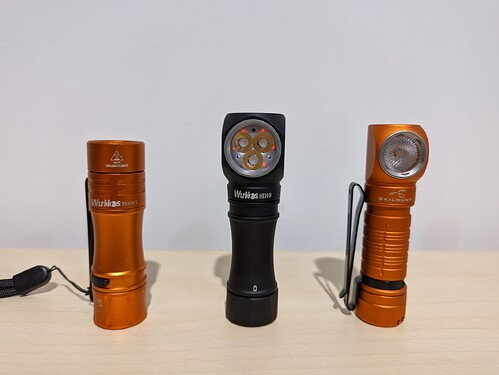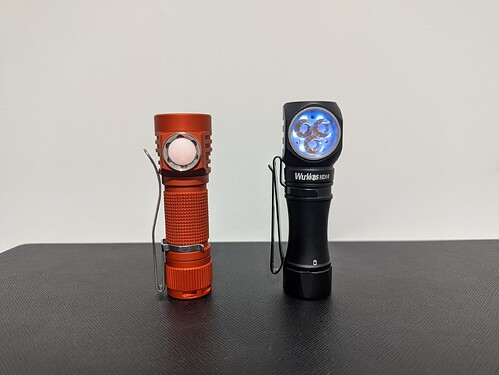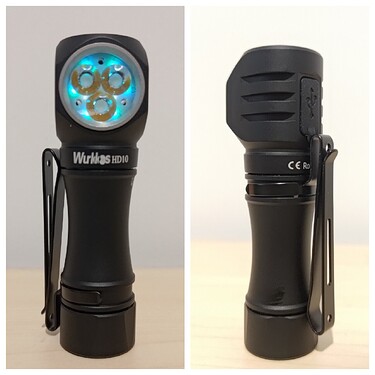So, there ARE flashing pads?! Nice.
Yes, hidden inside and inaccessible without desoldering the driver ![]()
The batch of PCBs that is entering production now has them moved to an accessible place, but no idea when they will hit the market. We should have a few thousand units without to be sold first.
I’m fairly new to the flashlight scene, so I’m impressed that you can even update the firmware on a flashlight in the first place!
That will be nice. I wonder why they didn’t put them in an accessible location to begin with?
By the way, can you share more info on this PCB? Would you be willing to share your gerber files so I could also have some made?
Once I tested it I will publish the sources on GitHub, free for everyone to modify (KiCad 8.0 file format) or order (Gerber files).
More info here:
My teardown and explanation of how to access the pads here:
My full review of the light here:
Awesome! Thank you for the info.
I’m actually in the process of building a 1610 desktop cnc mill, mostly for (attempting to make) PCBs, but who knows when I’ll get around to finishing that project!
That’s a good question. Any comment, @Wurkkos @Wurkkos_Terry ? I’m also wondering why the flashing pads were not put in an easier to reach location - I’m not a driver designer, so if there’s a good reason why the pads are not in an easily accessible location, would love to hear it.
Easier/cheaper. The light has 3 interleaved PCBs, and they simply put the pads on the PCB with the microcontroller where it was closest, instead of adding an additonal edge contact to the battery PCB that the user would see. My guess is, the engineers who designed the PCBs were not told by management/marketing that there really are users who want to re-program their flashlights ![]()
The actual HW design is usually done by generic electrical engineers, not by flashlight enthusiasts (apart from a few cases like the D3AA where BLF member thefreeman designed the driver). So unless marketing/management specifies exactly where to put the pads, they will put them in a place easy to reach for programming in the factory, but not necessarily for the user.
After getting complaints from review unit testers, they moved it, but a few thousand PCBs had already been built, so we are getting those for now ![]()
Yeah I notice that with all the Jinba tech companies over the years (lack of communication between departments). And it doesn’t really seem to be improving. Well, at least we have Terry who’s trying to champion our suggestions.
Let’s do a major group buy and purchase the rest of the initial stock so we can get to the new ones faster! ![]()
some better LEDs actually use violet light for the emitter itself and generate the blue portion of the spectrum itself by phospor conversion, in a controlled manner
Just got my HD10. As expected, 2022-07-25.
Got one about a week ago. Old firmware as expected.
Here is a size comparison between TS10 and Skilhunt H150
And with D3AA
I have a spare H150 clip so I tried to install it and it fit well. It did obstruct the charging port and at the front a bit. Flipping the tube works better for this clip
After using it for a while I don’t have any issue so I will definitely keep this one. It’s now my secondary EDC to carry along with D3AA. Quite happy with the result
Oh, I totally forgot to post in this channel as well, I published it by now:
I just received my HD10. WOW. Awesome little light. Anduril makes this light, “magnifique Chef’s kiss” Kudos to Toykeeper
I did notice there is no mixing of colors with auxiliary LEDs. Is this due to firmware?
That’s not really something that is possible the way Anduril operates. Afaik AUX channels can do on or off only, no PWM and therefore no brightness levels.
My Ts11 seems to have more colors by having more than one color on at a time.
Edit after doing a side by side comparison, the TS11 has one more color (purple) than HD10
Oh, yeah, that the HD10 can/should be able to do as well. At least mine did, btoh with the pre-release firmware and after I manually flashed it to the latest Anduril version.


















